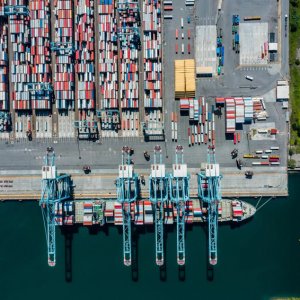
Putting Data at the Forefront of Asset Management
 By Pedro Alcalá | Senior Journalist & Industry Analyst -
Tue, 03/08/2022 - 15:52
By Pedro Alcalá | Senior Journalist & Industry Analyst -
Tue, 03/08/2022 - 15:52
Should data management be a top priority for builders and operators of solar energy assets? The answer to this question can define the financial success and economic viability of projects, according to Chiara Secco, Country Manager for Mexico and Central America, Green Power Monitor (GPM).
“You will find that what truly leads to a return on investment (ROI) on your solar asset is how well you collect, use and store your data,” said Secco. The platforms and tools provided by GPM are designed with this idea in mind. Essentially, the value of a solar asset cannot be maximized without a monitoring and control approach that integrates state-of-the-art data management into an asset’s daily operations. “When you are in the control and asset management business, your main task is to maximize the performance of your clients’ assets.”
Crucially, there is a difference between on-site and off-site data management solutions, according to Secco. A perfect technological integration must be made between these categories, yet each tool must address the separate needs that each category represents. On-site solutions include SCADA systems that function as in-plant controllers for utility-scale power plants. The gathering and storage of data that these systems manage must be reliable, just like the software that makes these processes transparent in real time. These on-site systems also need to be designed with field technicians and control room operators in mind, adapting usability to the specific needs of on-site personnel. A more ambitious on-site solution is a Power Plant Controller (PPC), which provides direct control over all devices. An important success factor for PPCs is their flexibility, as issues regarding compatibility and the evolving Grid Code requirements can generate unexpected data management problems for operators.
Remote solutions need to be centralized within one system to be as useful as possible to operators. Secco mentions the scalability of GPM’s centralized solutions as one of their main advantages, equipped for managing either a smaller amount of utility scale assets or various distributed generation (DG) systems that can be composed of dispersed technology. A centralized solution can simultaneously perform the functions of asset management, O&M management and can generate automatic reporting, which can be styled in line with a company’s corporate image.
“As we generate more of this data, we begin to ask what the data can do and what it has to say about the asset’s functioning beyond the more essential decision-making that it can support,” added Secco. As an asset’s data generation increases, tools such as GPM’s can define specific problems regarding devices and operational conditions. This leads to advanced preventive maintenance strategies and therefore creates even higher cost savings, increasing an asset’s ROI further. “Asset management companies say they can already do this, but through technology we want to empower the independence of operators so they can find these savings and optimizations during their day-to-day operations,” concluded Secco.
















